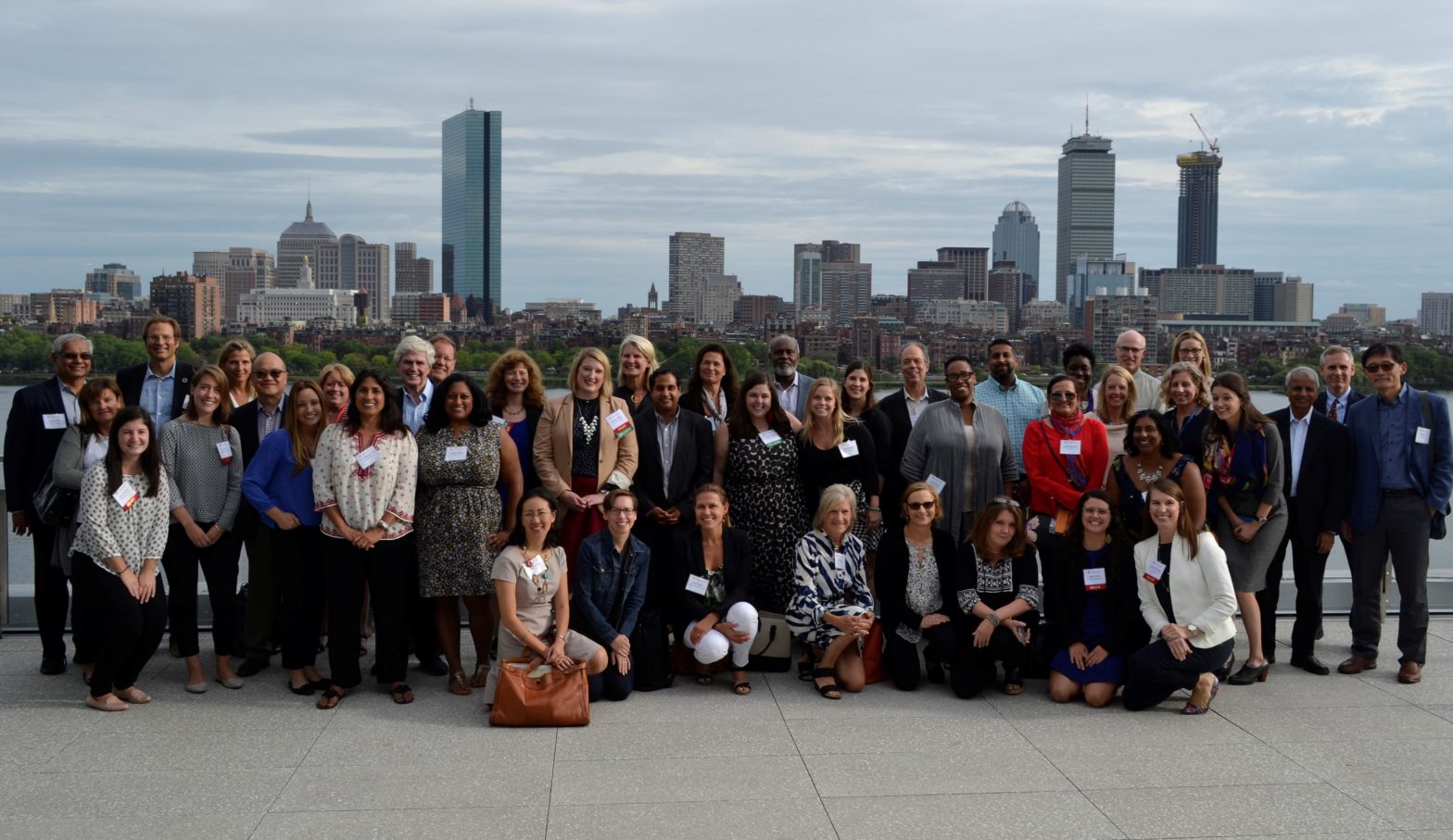
Some of the best moments at conferences come from the unexpected conversations that take place in hallways, over coffee, or during a meal. You meet someone with a common interest, perhaps funding organizations in the same country where you are working or directing their grant making to the same Sustainable Development Goals (SDGs) that you are trying to address, but they are approaching it through a different lens. Together, you start brainstorming and generate new ideas for your own efforts, identify possible opportunities for collaboration with each other, and share potential partners neither imagined before. I love these types of generative conversations, particularly when they lead to more collaborative, impactful, and strategic philanthropy.
What if an entire conference was designed to create moments like these for all of its attendees?
That was the goal of the 2018 Innovations in International Philanthropy Symposium, co-hosted by TPI’s Center for Global Philanthropy and New England International Donors (NEID). We wanted to create a venue for donors from across sectors – private and family foundations, corporate foundations, community foundations, donor-advised fund holders, and individual philanthropists – to collaborate with one another and gain insights and hope from inspiring speakers, as well as practical “hands-on” knowledge to improve their philanthropic impact. We managed to attract truly exceptional participants; as the former ambassador from Zambia once told me, “It was as if you looked up into the heavens and plucked the brightest stars to attend.” Any of the participants could easily have led a workshop or spoken on a panel as they all had so much experience to share, and the resulting conversations proved inspiring.
Collaboration can strengthen philanthropy in many ways. Here are three themes of collaboration that emerged during the 2018 Symposium:
1. Collaboration’s Role in Scaling Up
Last Mile Health (LMH) presented a talk on “Innovations in Scaling Global Solutions,” co-hosted by Raj Panjabi, LMH’s Co-founder and CEO, and Chris Anderson of TED and The Audacious Project. Last Mile Health is a great example of an organization that went from a small, community-driven effort to a significant and impactful national program in Liberia. Conference attendees gleaned practical insights from how to use collaboration to maintain quality and local ownership as programs scale up, to how to build partnerships with a broad range of donors from various sectors, including government. I heard the process of scaling up described once as a hockey stick, with progress being made along an apparently straight line as it takes time to develop a strong organization before it can scale on that groundwork. It is most important that the quality of the original program be well developed, and subsequent scaling be based on the local context. We see time and again that collaboration at both the funder level and the programmatic level can be key to successful scaling.
2. Supporting Collaboration among Organizations on the Ground
Joe Scantlebury, Vice President for Program Strategy at the W.K. Kellogg Foundation, co-presented with the United Nations Under-Secretary-General and Executive Director of UN Women, Phumzile Mlambo-Ngcuka on “Changing Communities through an Equity and Gender Lens.” Kellogg funds work on issues affecting families and children, where there is often overlap between health and other social challenges. Their effort to address the community crisis experienced by Dominicans of Haitian descent, for example, resulted in interesting collaborative funding and work that led to a bi-national strategy to address the situation. The funding supported groups of nonprofits in both Haiti and the Dominican Republic to increase their collaboration as key organizations all working on the ground to respond to the crisis. As Kellogg and so many funders have found, the value of partnerships among organizations on the ground can be instrumental in advancing lasting positive change.
3. Collaboration Can Help Address the Power Imbalance
A variety of participants at the Symposium reinforced the point that collaboration requires cooperation and often a supportive “hub” organization that does not necessarily have a vested interest but can help to facilitate communication. The need for funders to understand and respect local networks of organizations that deliver multiple resources and address layered challenges was underscored in more than one session. In fact, donors can even make situations worse unknowingly, creating a competitive process with the wrong approach. Donors who learn how to address the imbalance of power often innate in philanthropy and truly collaborate with local communities will likely have a more positive and sustainable impact with their philanthropy.
As I noted at the start, it was our hope that the Symposium would enable all the foundations and donors who attended not only to gather inspiration and practical advice, but also to share their passions and ideas, and to make new kinds of connections across communities and issues. We hope that we succeeded, and look forward to learning how their takeaways affected the change they create in the world.


